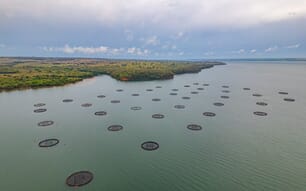Many years of research work on the development of photobioreactors, which use photosynthesis to turn light energy into biomass, have preceded this success.
The so called “Porous Substrate Bioreactor” (PSBR), also known as the twin-layer system, uses a new principle to separate the algae from a nutrient solution by means of a porous reactor surface on which the microalgae are trapped in biofilms.
Special about this new procedure is that it reduces the amount of liquid needed in comparison to the currently used technology, which cultivates algae in suspensions, by a factor of up to one hundred.
The PSBR procedure thus allows for a significant reduction in energy and for an increase in the portfolio of algae that can be cultivated.
Current successes in PSBR development and the rise in interest in this technology in recent years could signal a turn in the conception of future photobioreactors in microalgae biotechnology.
Microalgae have numerous applications: they are traditional sources of protein and carbohydrates. They can also be used in the sustainable production of natural pigments and antioxidants such as beta-carotene and astaxanthin. Polyunsaturated fatty acids, which usually come from fish oil, can also be synthesized from microalgae.
Furthermore, algae can serve as the basis for pharmaceutical agents such as antiviral and anticancerogenous substances. In environmental biotechnology, new concepts are currently being developed to employ microalgae to recover phosphor and nitrogen from sewage and reintroduce them into the nutrient cycle by means of organic fertilizers.
Their findings are published in the journal Trends in Biotechnology.




